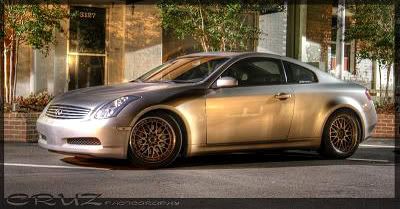blueprinting is no where near the same as just building a motor and making sure the clearances are ok to run.
Blueprinting
In engine blueprinting, all the specifications are double-checked. Usually this indicates closer-than-factory tolerances, with custom specifications appropriate for a street car or a race car. The goals are to either to re-manufacture the engine put out the rated power for its manufacturer's design (because not all mass-production engines put out the rated power), or rebuild the engine to make more power from a given design than otherwise intended (because custom engines can often be redesigned to different specifications). Blueprinted components allow for a more exact balancing of reciprocating parts and rotating assemblies so that less power is lost through excessive engine vibrations and other mechanical ineffiencies.
Ideally, blueprinting is performed on components removed from the production line before normal balancing and finishing. If finished components are blueprinted, there is the risk that the further removal of material will weaken the component. However, lightening components is generally an advantage in itself provided balance and adequate strength are both maintained, and more precise machining will in general strengthen a part by removing stress points, so in many cases performance tuners are able to work with finished components.
For example, an engine manufacturer may list a piston ring end-gap specification of 0.003 to 0.005 inches for general use in a consumer automobile application. For an endurance racing engine which runs hot, a "blueprinted" specification of 0.00045 to 0.00050 may be desired. For a drag-racing engine which runs only in short bursts, a tighter 0.00035 to .00040 inch tolerance may be used instead. Thus "Blueprint" can mean tighter or looser clearances, depending on the goal.









 Reply With Quote
Reply With Quote